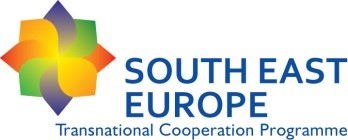FOROPA PROJECT
Biomass constitutes a sector of the highest energy potentials both, in South East Europe and in the EU27. It covers more than half of the renewable energy sources for heat applications, and as heat covers more than half of the final energy consumption in Europe, biomass obviously is a key domain to meet the ambitious 2020 targets of the Renewable Energy Directive (2009/28/EC).
The project FOROPA aims at promoting and strengthening clusters and networks for an improved use of lignocellulosic biomass in the SEE area. Existing national and regional capacities are coordinated and enhanced in order to increasingly utilize the available biomass potentials of forests, short rotation plantations and wood waste.
FOROPA analyses innovation needs in the biomass sector, investigates the transferability of Biomass Supply Chain Operational Reference Processes within the SEE territories, and defines and demonstrates a series of pilot applications based on the needs of the project participants. Applications and solutions are demonstrated under new conditions such as different terrain, climate, soil and other structural conditions. The transnational cooperation between triple helix actors involves a wide range of stakeholders from industry, research and public authorities and will result in innovation mechanisms to increase biomass potentials and to establish improved supply chains.
Transnational exchange and regional anchoring of technological and organizational knowhow boost innovation activities and entrepreneurship in the SEE‐area through identification, demonstration and promotion of Information & Communication Technology applications in the biomass sector. Further, the human potential factor in the SEE‐area is enhanced by setting up qualification, education and training plans for target groups relevant for biomass production and utilization.
FOROPA is co‐financed by the EU‐South East Europe Transnational Cooperation Programme. The consortium consists of 12 partners from Austria, Bosnia & Herzegovina, Croatia, Greece, Italy, Romania, Serbia, Slovenia, Slovakia, Ukraine, and two observer‐partners from Switzerland. It involves clusters, innovation networks, national and regional authorities, associations and interest groups, one NGO, and research institutes. Project duration is 24 months.








